Popularised by Alex Honnold in the Free Solo movie, and frequently used by crushers on Instagram to flex their power, the hangboard is an effective training tool used by experienced climbers to train their finger and forearm strength.
Every climbing gym has hangboards as part of their training area so you might feel like you should be using these tools that you are paying for. But while hangboarding works, I don’t think it’s the right path for everyone. Especially beginner climbers who lack the experience to make hangboarding worthwhile.
Many climbers (myself included) tend to start hangboarding too early. Doing so can lead to an overuse injury which will only set you back further in your path of progression. Furthermore, training with a hangboard will mean that you spend less time actually climbing. So while you might be getting stronger fingers, without the necessary experience, your overall climbing could suffer from taking up hangboarding.
In this article, we’ll take a deep dive into when to start hangboarding as a rock climber. We’ll discover your outcome through a range of questions.
I hope you came with an open mind as it very well might not be your time yet. But don’t fret. Climbing is much more fun than hangboarding. And if you aren’t ready to start hangboarding, you should count yourself so lucky.
What is hangboarding?
Hangboarding, also known as fingerboarding, is a popular training tool for climbers to increase their finger strength and endurance. Hangboarding is performed on hangboards, which are most commonly made out of wood (sometimes plastic) and tend to have a variety of holds (jugs, edges, pockets, monos) with various widths.
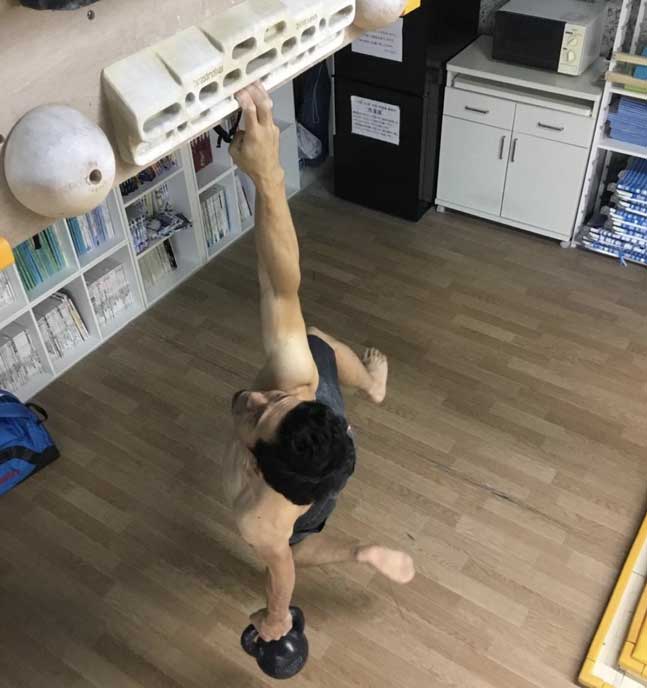
low intensity vS high-intensity hangboarding
I believe there is quite a bit of confusion when we refer to ‘hangboarding’ online. Because hangboarding is such a broad term, it often leads to some climbers completely advising against it and others encouraging the complete opposite.
From my understanding the confusion lies in how climbers view hangboarding. Some climbers see hangboarding as part of their warmup while others see it as a training tool reserved for its own day followed by adequate rest.
Those who view it as a training tool take hangboarding much more serious than those who use it as a simple warmup. Thus there is a big difference between the strain each of these ways of hangboarding can have on our tendons.
low intensity training (light hangboarding before climbing)
It is completely fine to do some light fingerboarding before your climbing session. Provided you know what you are doing and ensure that you are warm before you start hanging. For light fingerboarding, start with some finger and forearm stretches followed by at least 20 minutes of warm up climbing.
Once warm, you can do some warmup hangboarding which will look something like this:
- Hang for 5 – 10 seconds using each hold type (jug, sloper, edge)
- Rest 2 – 3 minutes in between
Doing light exercises like these are the ideal way to start of hangboarding. You’ll really get a feel of what it is like to hangboard without going too hard right off the bat.
Avoid using the hangboard before every climbing session to give your body plenty of rest. (Limit to once or max twice per week)
Although these are light exercises, you should always listen to your body. If you tendons feel off, your climbing session just ended and it’s time to go home.
high intensity training (dead hangs with added weight)
High intensity training using a hangboard deserves its own training day. This is a more extreme form of hangboarding which often includes doing max hangs with added weights.
Climbers using high intensity training schedules do this for a set period of time, for example 2 – 4 weeks, followed by plenty of rest. During these training weeks they prioritize hangboarding over climbing.
High intensity training also requires proper warmup with finger and forearm stretches and ideally some easy bouldering for 20 minutes. But these training sessions should never end with climbing. Furthermore these high intensity training sessions should result in at least 48 hours of rest to allow the body enough time to recover.
Climbers are much more likely to reap results from a stand-alone, high intensity hangboarding training session as opposed to low intensity training session. After all, low intensity hangboarding tends to be more of a warmup than a way of training.
Part of the reason is that high intensity sessions hold more structure than someone hanging from a board before their climbing session.
Are you ready to start hangboarding?
Nobody agrees on when precisely one should start hangboarding. Some argue you can start as early as 6 months while others speak of a year or even multiple years after you’ve started climbing. Some even argue that hangboarding isn’t at all necessary to improve one’s climbing ability.
So what gives? Who is right? When exactly can you start a hangboarding routine? The answer is slightly more complex than you might think.
Whether you are ready to start hangboarding, depends on a variety of factors. How long you have been climbing, whether you are past your growth spurt, how seriously you take climbing, and so on. A casual climber who climbs once per week regardless of how long they have been climbing does not need a hangboarding routine to increase their strength on the wall. Similarly, someone who lacks basic technique has no business on a hangboard.
What I’m trying to get at is that whether you are ready to start fingerboarding does not depend solely on one simple question such as ‘how long have I been climbing’. Climbing experience is an important factor, but it is not the only thing we should consider. So let’s ask ourselves some questions to come to an appropriate conclusion.
Questions to ask yourself if you are ready to hangboard
How long have you been climbing?
Dr. Eva Lopez (whom I shall reference often throughout this article) mentions in her fingerboard training guide[1] that hangboarding can be safely performed after 2 years of consistent climbing training.
One year of serious climbing (2 – 3 days per week) is probably enough to start light fingerboarding but 2 years (as Dr. Eva Lopez suggests) is a safer timeframe.
This is my opinion now, I didn’t take this advice back when I started hangboarding which was around the 8-month mark of my climbing training. I sustained a minor A2 pulley strain (foot slip on a V5) shortly after I started my hangboarding routine. Whether these events are correlated I do not know.
Starting hangboarding too early could not only spoil your fun but will likely do more harm than good. Trust me, being unable to climb for several weeks because you have a pulley injury is far worse than not being ready to hang from a board. Focus on climbing, improving your technical ability, and generating mileage as opposed to starting with a training schedule to fix an early plateau.
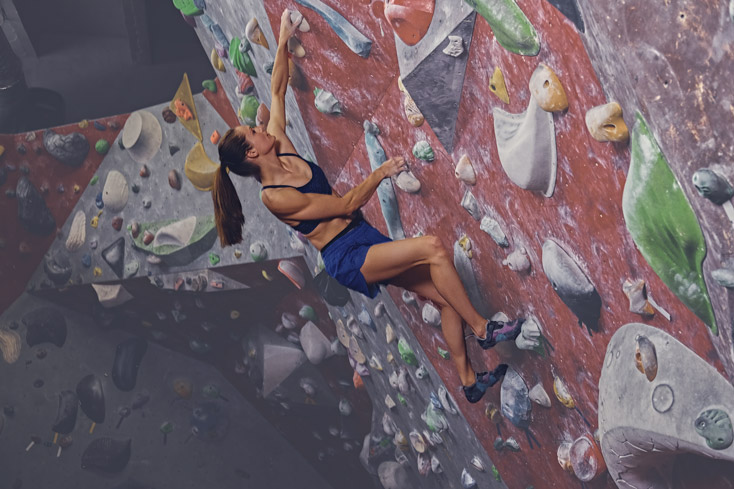
are you old enough to start hangboarding?
Age is definitely an important factor in deciding when you are ready for the hangboard. It’s not advised to start hangboarding before growth plates are closed.
According to a 2020 study[2], the most common injury among adolescent climbers is a growth plate injury to the finger, medically known as an epiphyseal fracture. This study references a bunch of other studies to back up its claims. One of these references (Schöffl et al, 2015[3]) discovered that 64.3% of these epiphyseal fractures are caused by crimping.
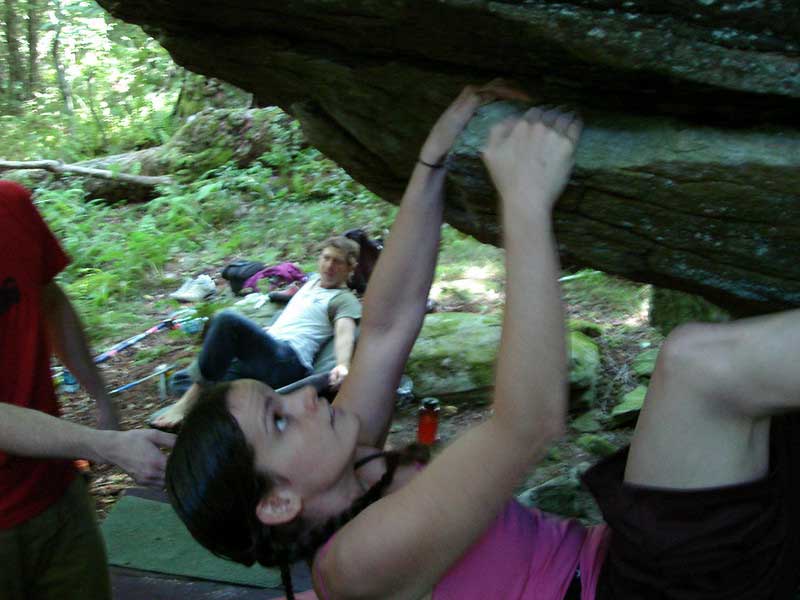
Which brings us of course to the hangboard. Since most of hangboarding involves using a crimp grip (open hand, half crimp, closed crimp) this is definitely something to think about.
In her progression training guide [4], aimed at beginners in hangboarding, Dr. Eva Lopez (who did her Phd thesis on finger strength) mentions a minimum age of 16 as well as 2 years of climbing experience. For her transgression training guide, which is aimed at climbers with 3 – 4 years of experience AND hangboarding experience, she mentions a minimum age of 18 years old.
Considering her progression series is based around bodyweight exercises I think it’s safe to say that she does not recommend doing weighted hangs to anyone under the age of 18.
For those interested, Dr. Lopez’ hangboard training guides can be purchased here. (not sponsored or affiliated)
are you serious about climbing?
What a silly question to ask. But let’s do it anyway. How serious are we about climbing? Is it a big part of your life, so big that you want to start training specifically to become stronger? Be honest with yourself and find out if you wish to start hangboarding for the right reasons.
If it’s just to impress your buddies next time you step foot into a climbing gym, think again.
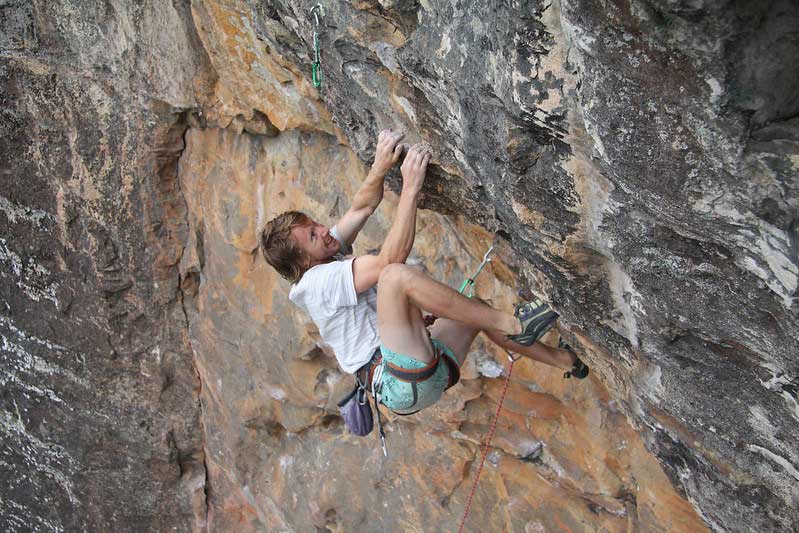
If you can safely say that climbing is a big part of your life and you want to surpass your current plateau with a healthy hangboarding routine, then it’s a different story of course.
What are your climbing goals?
Most climbers will start hangboarding once they feel they have reached a plateau. This was the case for me where I felt that the hangboard would be my one-way ticket into V6 boulders (spoiler alert: it wasn’t).
However, it’s important to understand exactly what a plateau is first. There are plenty of plateaus in climbing but not all of them are equal. Sometimes a plateau will simply mean that you need to climb more and develop more technique in order to send a specific grade. Other times, you may not have enough strength to send the problem.
It’s of course only the latter that forms a valid reason to start hangboarding. You are going to benefit much more from climbing crimpy V3 boulder problems than you will ever from hanging on a hangboard when you are just trying to break into V4-V5 territory.
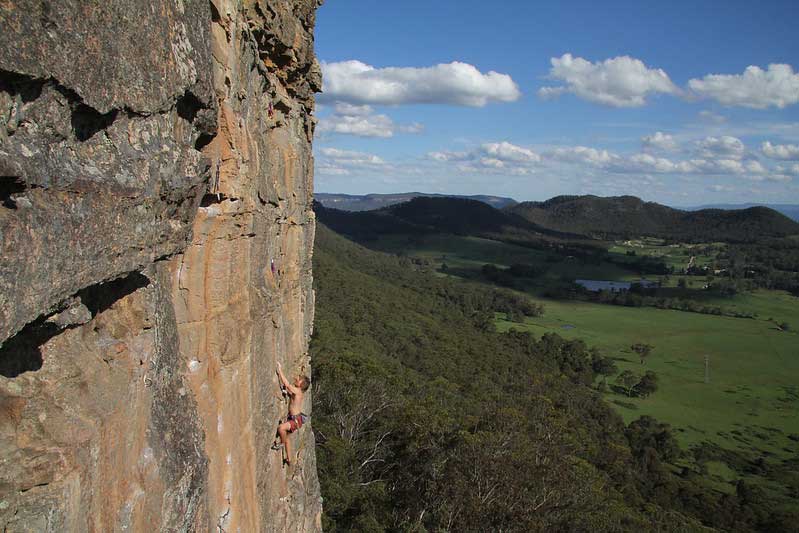
have you mastered climbing technique?
How dare I question your climbing technique… But I’m going to do it anyway. Because I wish someone was as blunt with me as I am here now. I thought I had good technique just 6 months into climbing. Not even kidding. I was able to perform a decent flag and already climbed feet first (short person beta letsgo). But if I look at videos from those days, I cringe a little. Not that we should be ashamed of our technique as beginners, but the fact that I truly believed I had the technical skills to climb V6’s and only fingerstrength was holding me back.
I can safely say it was the opposite. I definitely had enough strength back then, I just didn’t have the required technique. Take it from me that your technique has a lot of improvement ahead. And that’s not a bad thing… I’m still working on my technique after years of climbing!
Lacking strength isn’t a bad thing in climbing. It forces you to use technique to send a problem! Nobody wants to be that climber that relies entirely on their finger strength. We want to look effortless when we are climbing. Or is it just me?
Can you stick to a training schedule?
Starting a hangboarding routine is a serious undertaking. At least if we are seriously talking about starting to hangboard as some form of training and not just hanging from a board every now and then.
Planning out your training is necessary if you insist on taking hangboarding seriously. I’m issuing this warning because those who are very loosey-goosey about their training and just kind of ‘go-with-the-flow’ might end up overdoing it.
Not only will a lack of plan render your hangboard training ineffective (and thus useless), it can also lead to injury. So plain and simple: if you want to hangboard, you should plan those hangboarding days.
Are you willing to sacrifice a climbing day?
Our bodies can only take so much, we need to give it plenty of rest. It’s easy to go too high in volume which may result in a decrease in performance or even injury.
If you’re someone who goes climbing 3-4 days per week, you’ll likely have to replace one of these climbing days with a training day to give your body enough recovery time. After all, hangboarding on the same day that you are climbing is not recommended and definitely should be avoided by beginners.
You could of course do some light hangboarding before a climbing session but anything more than that should be avoided.
alternatives to hangboarding
Not ready to hangboard just yet? Here are some lower-intensity alternatives that will improve your grip strength.
portable hangboard
How is a portable hangboard safer than a hangboard? Well because we don’t actually have to hang from them. Portable hangboards can help you improve grip strength using much less intensity.
finger trainer
There are plenty of finger-training devices on the market that offers a way to train the forearms and fingers without requiring a hangboard. These are also great devices (the light kind) to have laying around should you ever have a finger injury and require re-training in the future.
finger curls
If you have access to a gym where you can use a barbell, or you have some dumbbells laying around at home, then you might consider doing finger curls as an alternative to hangboarding.
Steven Low has a great article on finger rolling and using it as a training device for bouldering.
dead hangs
Before you start hangboarding, why not start hanging from a pull-up bar first? This will allow your body to get comfortable with the idea of hanging without using your untrained fingers first.
hangboarding – FAQS
should i hangboard before or after climbing?
You should never hangboard after a climbing session. This is a surefire way to overload your tendons and develop an overuse injury. Light hangboarding before a climbing session is fine provided you give yourself a proper warmup beforehand.
To ensure you are warm before you start hangboarding, start with finger and forearm stretches followed by at least 20 minutes of warm up climbing.
how often should you hangboard?
As a beginner, you should hangboard no more than once and max twice per week. Allow for at least 48 hours of rest following a hangboarding session.
should I purchase a hangboard?
Most climbing and bouldering gyms have a training area where you’ll find a hangboard or two. These hangboards are more than sufficient to start hangboarding on as a beginner. Sure, you could go out and purchase one of your own. But out of personal experience that might make you more likely to overuse the hangboard and potentially injure yourself.
So I would steer clear of purchasing a hangboard when you are just starting out. If you are an eager beaver like myself, It’s probably best to stick to gym hangboarding.
References
- Fingerboard training guide (I) preliminary evaluation. Eva Lopez Blog (link)
- Rachel N. Meyers, Steven L. Hobbs, David R. Howell, Aaron J. Provance (2020). Are Adolescent Climbers Aware of the Most Common Youth Climbing Injury and Safe Training Practices? (link)
- Schöffl et al (2015). EPIPHYSEAL STRESS FRACTURES IN THE FINGERS OF ADOLESCENTS: BIOMECHANICS, PATHOMECHANISM, AND RISK FACTORS (Schöffl et al, 2015) (link)
- Dr. Eva Lopez Progression Guide & Transgression Guides (link)
More articles like this
- Can I get abs from climbing?
- Tips for short climbers
- Bouldering vs rock climbing
- How often you should go bouldering per week
- Why bouldering is a good full-body workout
- Climbing 101: what is cutting feet?
- How long does it take to progress in bouldering?
- How much does it cost to start bouldering?
- What to wear indoor bouldering
- How much of a bouldering wall can you use?
- Should climbing shoes hurt?
- How many climbing shoes do you really need?
- Core Workout for Climbers (9 Exercises to Work the Abs)